loki100
Posts: 10920
Joined: 10/20/2012
From: Utlima Thule
Status: offline

|
Turn 77: 3 – 9 December 1942
The German offensive seemed to slacken in the first week of December. At Ryazan they tried for another encirclement south of the city but their other major operations were a series of limited probes into the lines held by North-Western Front and a localised counter-attack on Crimean Front's spearheads.
To Stavka it appeared as if Moscow had been saved despite the Bryansk disaster in September. Tolbukhin's 24 Army had been instrumental in turning a panicked rout into a controlled retreat, as well as launching a steady series of heavy counterattacks.
In reward he was promoted to General-Polkhovnik and urgent discussions began as to which of the main Fronts he should take command.

Ryazan
Here it appeared as if the determination of the Soviet resistance in the previous week had badly weakened the Germans. They had swung south in an attempt to encircle 21 and 34 Armies but had failed to secure their encirclement. In response Stavka identified the opportunity not just to disrupt their lines of communication but to cut off the two Panzer Corps that were to the east of 21 Army.
The opening blow was struck by 4 Shock Army on elements of 56 Panzer Corps. However, the Germans managed to respond to the threat and the exhausted formations of 4 Shock were forced to fall back to their starting positions.

[1]
The failure of 4 Shock disrupted the Soviet plans, but the opportunity still existed and the elite mobile formations of 40 Army again hit 56 Panzer. In desperate fighting again the Germans held. This time both sides heavily committed their air support and in the fierce air battles the new Yak-9s proved their value.

[2]
With the failure of the northern wing, a full encirclement was no longer possible. Still early on 5 December, 3 Tank Army struck the overextended formations of 57 Panzer. The result was a day of brutal fighting that only ended with over 300 tanks burning in the snowy fields. However, the Panzers had been decisively beaten and took further losses as they fell back in panic.

[3]

(Soviet tanks moving past a knocked out German Marder SP gun)
At the same time, 1 and 2 Tank Armies struck and again losses on both sides were high but this time 48 Panzer Corps was forced to fall back to escape encirclement.

Here the Soviet offensive had commenced with a massive salvo from the freshly deployed Katyusha brigades. The capacity to bring massive amounts of firepower to bear in a small sector had proved critical to the Soviet victory.
However, all three tank armies were shattered in the fighting and Soviet formations were intermixed across the 40 km long battlefront. Stavka opted to keep its limited reserve out of action and not try to follow up the hard won victories.
By 7 December, the Ryazan battles died away and Stavka estimated that all the German reserves were fully committed. Stavka ordered Kalinin Front to launch a limited offensive designed to confuse the Germans as to the real focus of the Soviet counter-stroke.
This fell on the northern flank of the Germans pressing at Ryazan. Taking advantage of the frozen Oka, Western Front quickly forced the river and, taken by surprise, the exposed German infantry fell back as Soviet formations pushed 20 km over the Oka and threatened the German rear.


(Infantry from Western Front attacking over the Oka)

Rostov
Here the Germans started by launching a series of counter-attacks that drove back some of the over-extended formations from the previous Soviet attacks. However, the Soviet offensive continued and 57 Army finally drove back the Italian formations that had been blocking communications into and out of Rostov

[4]
The main effort was on the south bank of the Donets and here the mobile formations of the Crimean Front carried on pushing back the various non-German formations. By the 8 December, they had outflanked the German infantry and a massive attack was launched in an effort to over-run this German strongpoint.

Despite this failure, the Axis lines had been forced back some 30 miles as Crimean Front pressed towards Voroshilovgrad..
The North
Here the Germans had continued the probing attacks of the previous week. They seemed to lack the force to turn localised victories into a major encirclement but were making steady progress towards the rail junctions around Vyshny Volochek.
One concern was that Soviet reconnaissance had indicated the Germans may have pulled some Panzer forces from their Ryazan offensive. If so, it was possible that the Germans still intended to attack Moscow from the north or force the Soviet formations in this sector to pull back eastwards.
Stavka was sufficiently worried to allocate some of the freshly raised divisions to fill out the gaps in Volkhov and North-Western Fronts' formations. If Ryazan had been saved, it might be possible to allocate additional forces in case the Germans made a major effort on this sector.
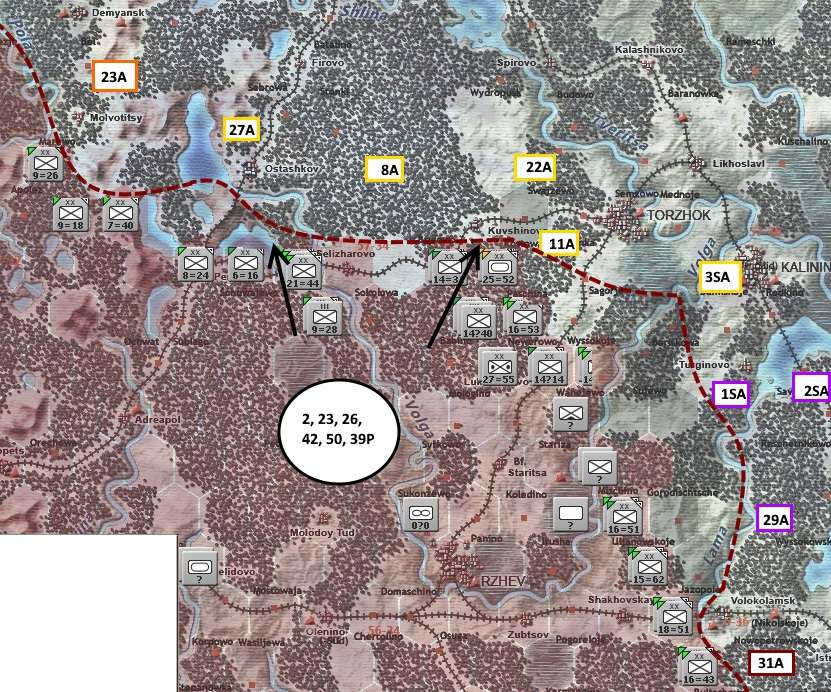
OOB
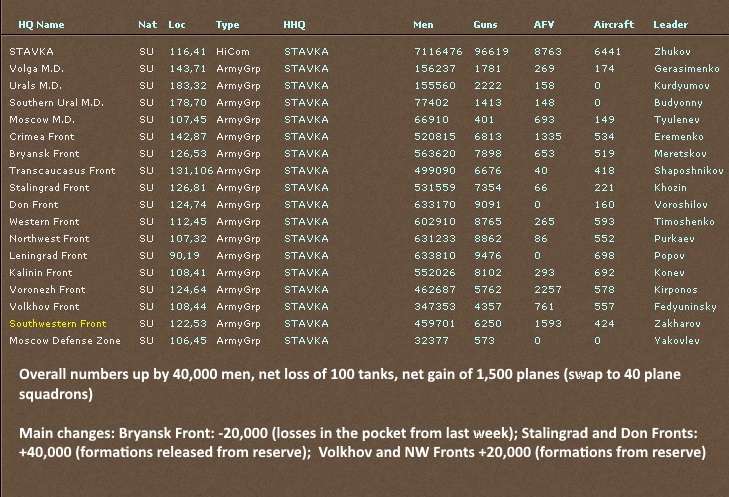
Losses were again heavy. The Germans lost 33,000 men (8,000 killed), 185 tanks and 170 planes for Soviet losses of 93,000 men (20,000 killed and 20,000 prisoners), almost 600 tanks and 215 planes. The Germans also lost 8,000 trucks and the Soviets 3,000.
[1] Damn, if this had worked I could have put 2 tank armies to completing an encirclement.
[2] Double Damn, at this stage I was really not liking this turn one little bit.
[3] Maybe not such a bad turn after all?
[4] At the third attempt ...
_____________________________
|
 Printable Version
Printable Version








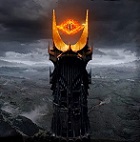
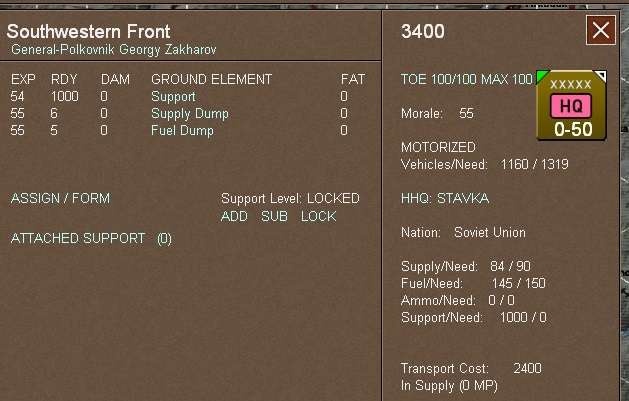
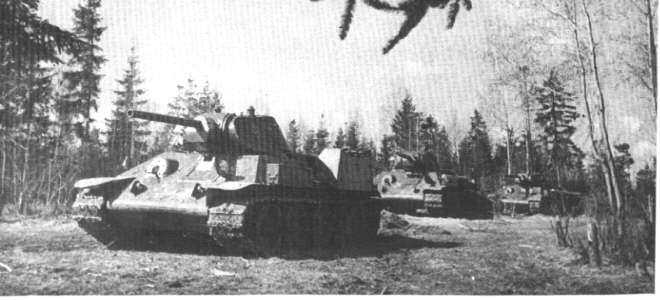

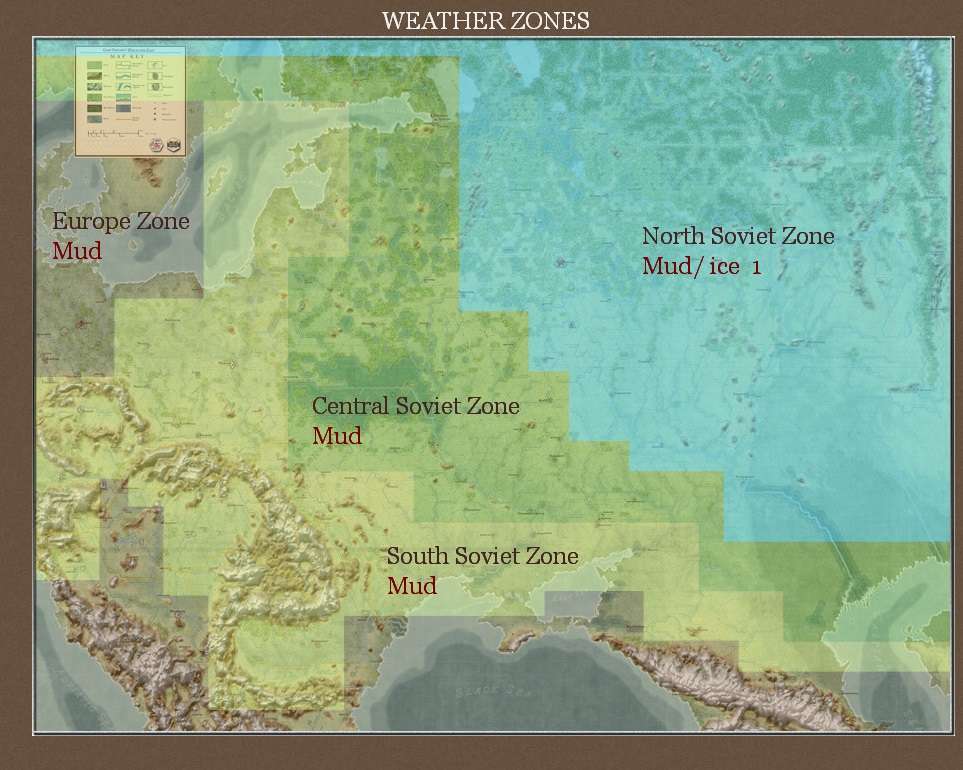
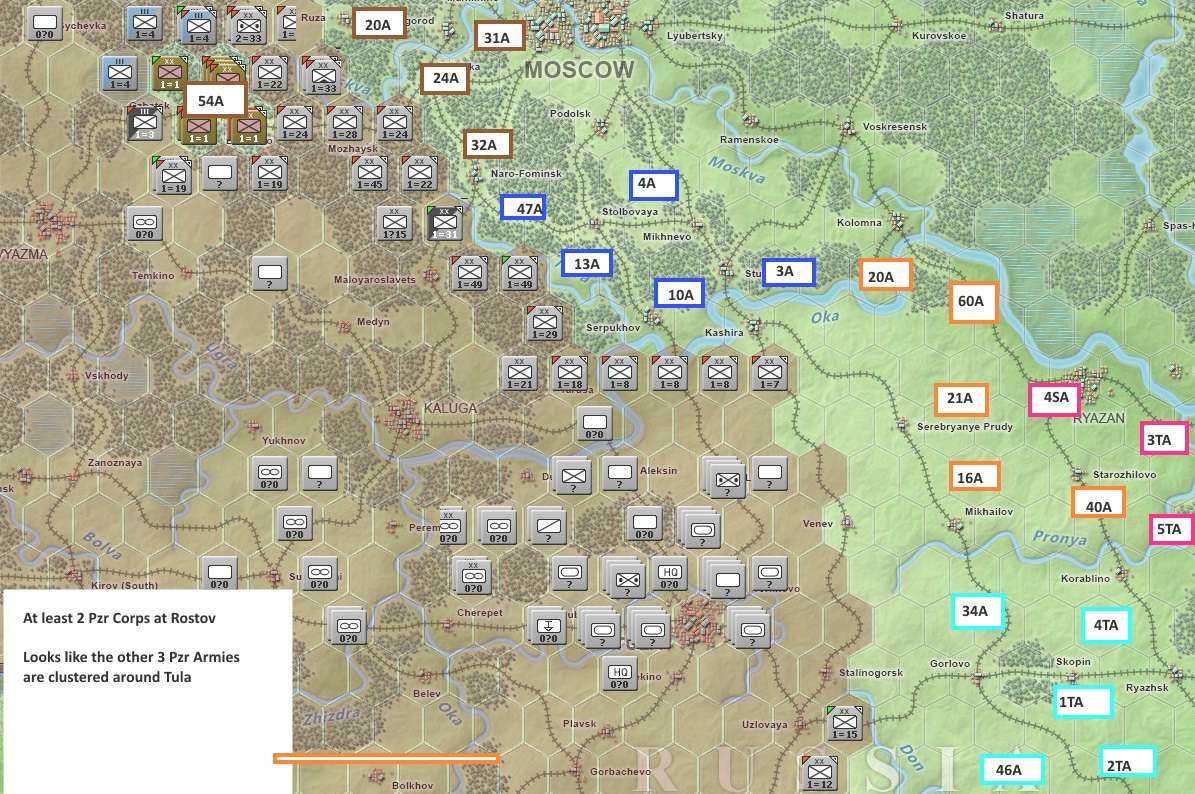

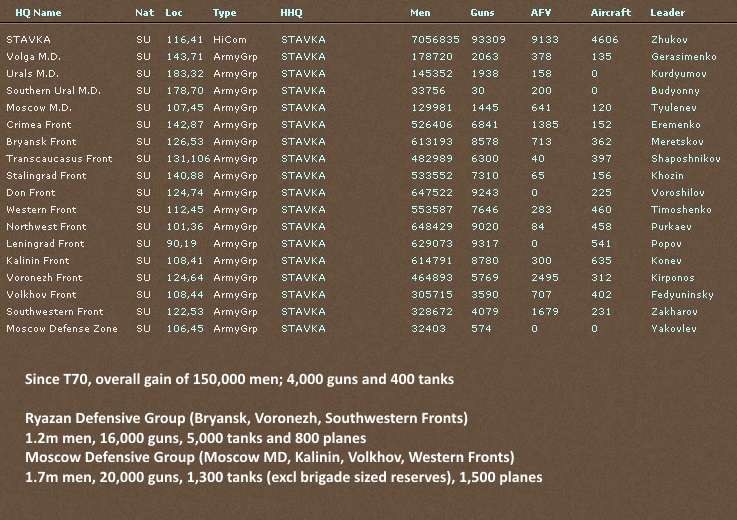


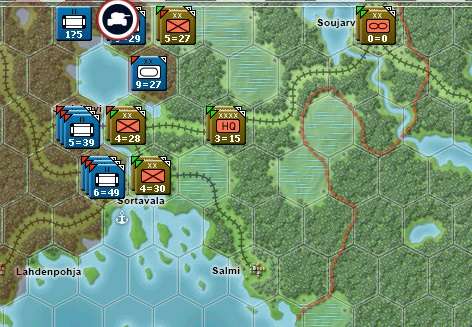
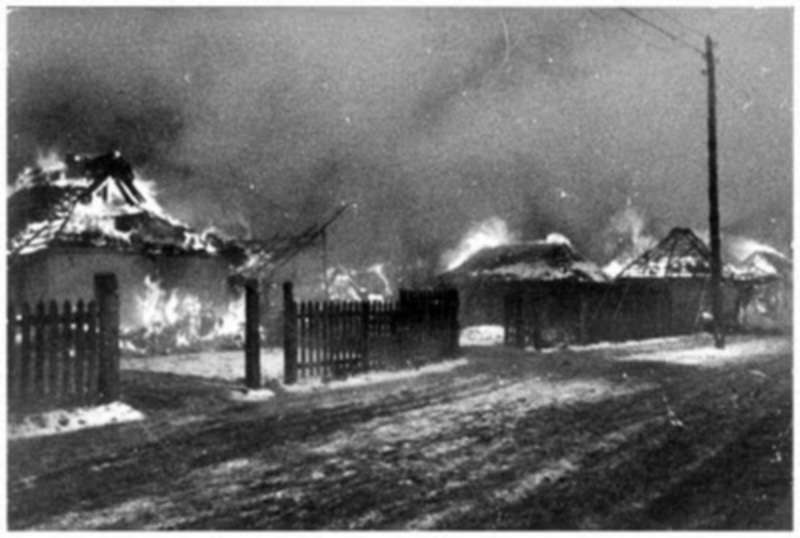















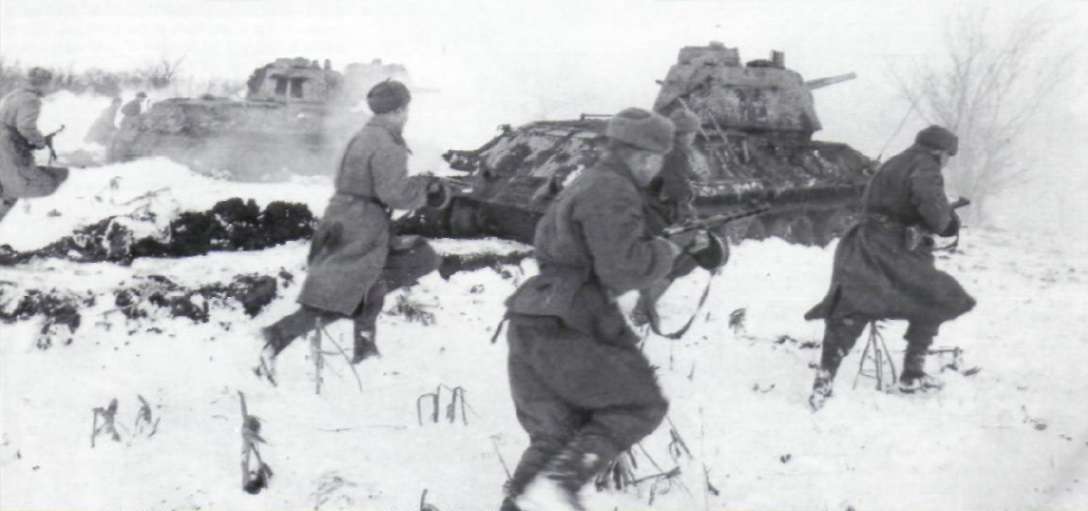

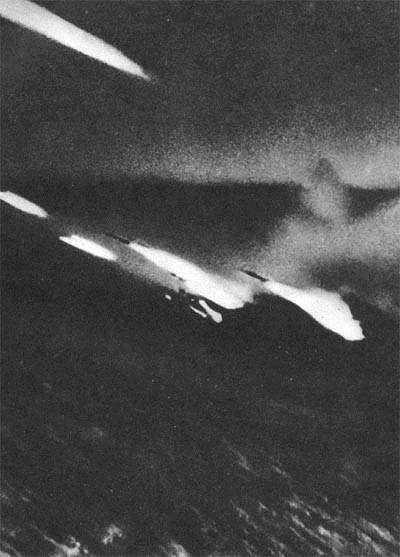




















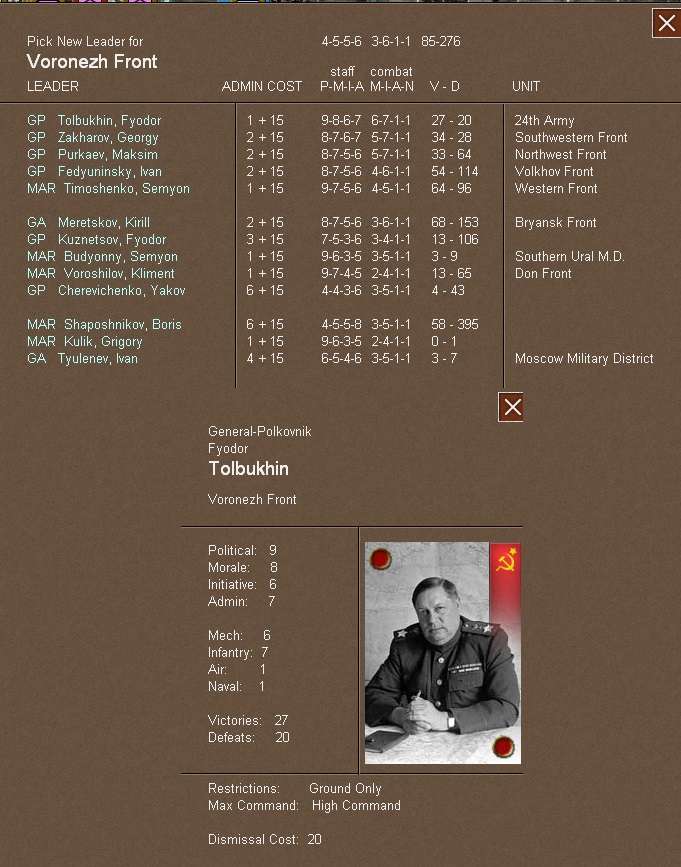

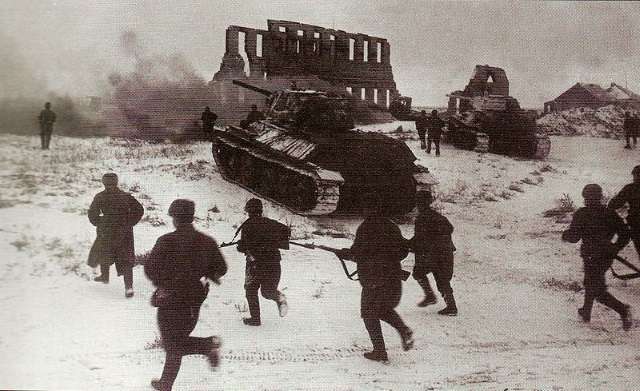



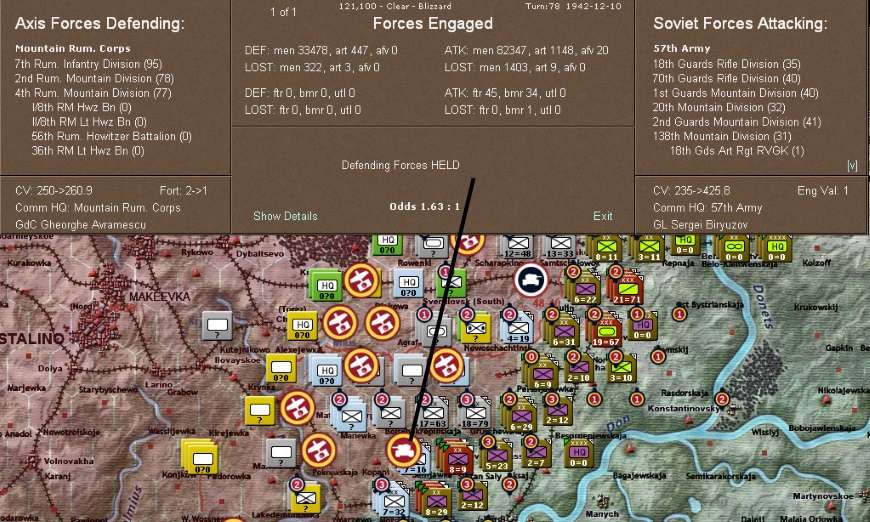


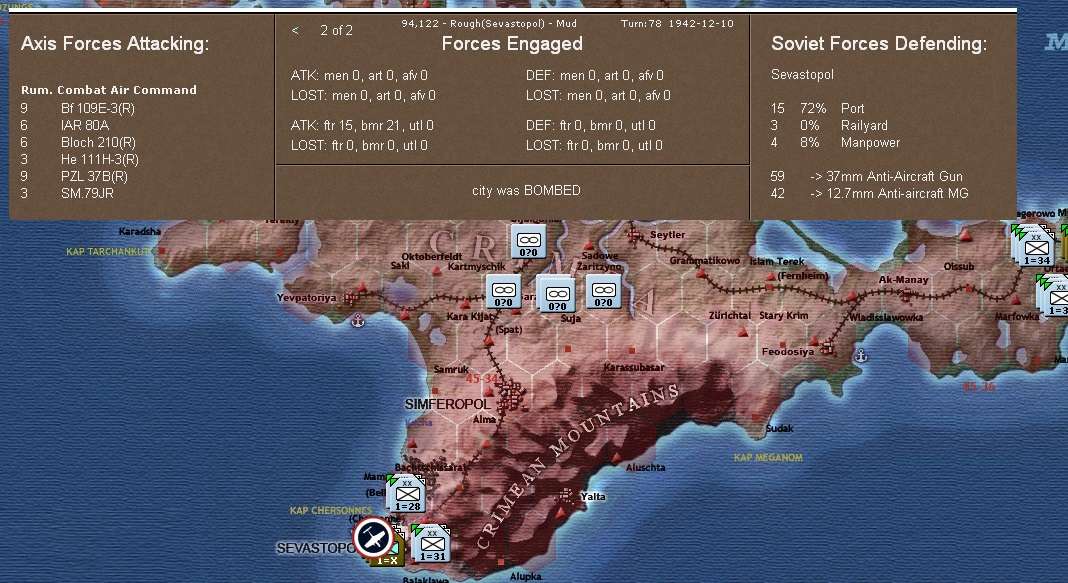

 New Messages
New Messages No New Messages
No New Messages Hot Topic w/ New Messages
Hot Topic w/ New Messages Hot Topic w/o New Messages
Hot Topic w/o New Messages Locked w/ New Messages
Locked w/ New Messages Locked w/o New Messages
Locked w/o New Messages Post New Thread
Post New Thread